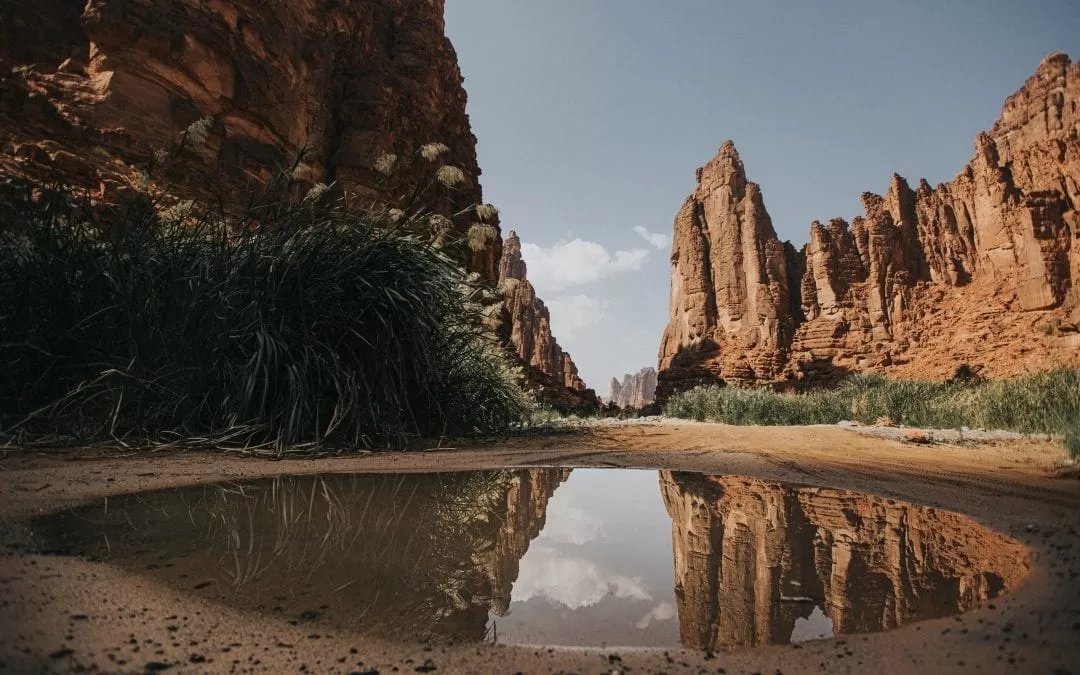These are the Saudi Arabian destinations you need to include on your bucket list, from monumental desert tombs to white-sand atolls and evocative old towns.
The beauty spots in Saudi Arabia are not yet as recognizable (or overrun) as they might be now that the country has opened up to international visitors. Nabatean tombs with the same awe as those in Petra, pristine dive sites that compare favorably with those in Egypt, and great canyons as spectacular as those in several national parks in the U.S.
There is a wide variety of landscape in this country, as well as ancient trading culture evident in the souks of modern cities and the desert homes of prophets and poets.
In the south-west, Asir region is home to rare Arabian leopards, lush mountains, and tribal people wearing floral headdresses. The ochre deserts of the north give way to red-sand atolls along the Red Sea coast. In the south-eastern region, the Empty Quarter, the largest desert in the world, covers much of the land.
As soon as it is Covid-safe to visit, you’ll find a much warmer welcome than you’d find in more weary destinations – and, more importantly, staggering natural beauty that still feels like discovering a captivating secret. You shouldn’t miss these eight spots.
Wadi Al Disah
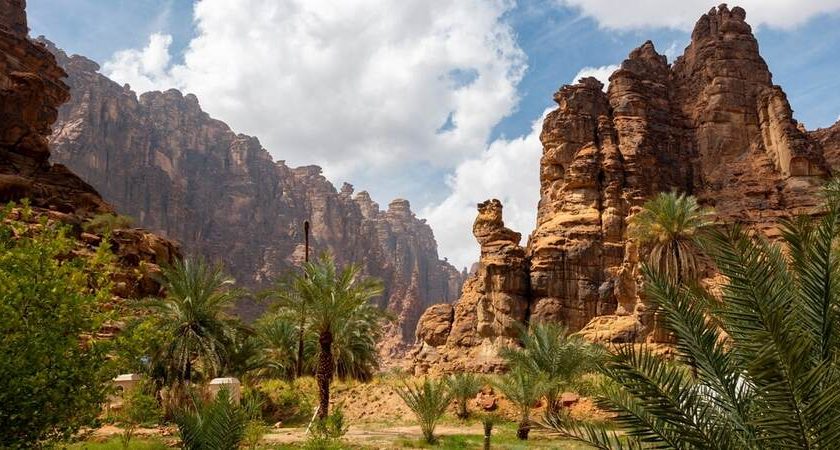
An epic collection of sandstone columns in a vast hollow near Tabuk in the north of the country, the Al Disah Valley looks like a mix of Monument Valley and Grand Canyon – an eerie mix of Grand Canyon and Monument Valley. The dusty amber desert is interrupted by a valley of swaying high grasses and palm trees. Be sure to be here when the sun casts an ethereal glow over these sculptural rock formations, whether you arrive on foot or by four-wheel-drive.
Hegra
One of Saudi Arabia’s most recognisable sights is Hegra, near Al Ula, where magnificent rock-cut tombs are suspended in the majestic desert. In the first century AD, Nabataeans built these 131 enigmatic mausoleums, which remind us of Petra’s ancient ruins. In contrast, Hegra remains relatively unknown, attracting more wildlife than tourists. Petra hosts more than a million visitors a year. Aman, Banyan Tree, and Tulum-born Habitas are among the hotel groups opening eco- and heritage-sensitive camps around what could become a big destination in 2020.
Umluj
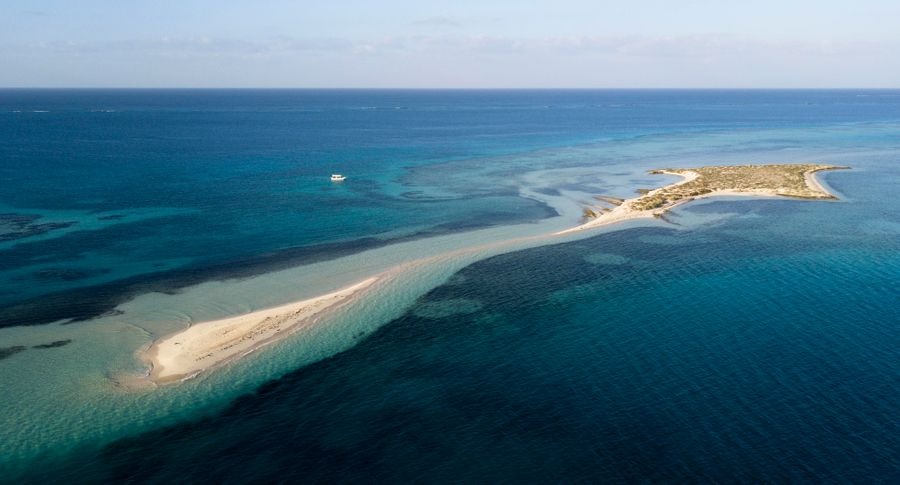
Often called the Maldives of Saudi Arabia, this unassuming coastal town and region has a reason for its popularity. An area of the Red Sea that is definitely turquoise is scattered with 104 atolls north of the town. Among the quintessential Umluj activities is island hopping – spotting dolphins on the way to outcrops such as Jabal Hassan and snorkeling, fishing, or laying on white sandbars, becoming as relaxed as the dugongs and hawksbill turtles that swim around them. A world-class dive area, it offers more than 1,200 fish species and 300 kinds of coral, four times more than a Caribbean dive area. A few islands are being developed as sustainable resorts, but the area is largely undeveloped.
Al Balad, Jeddah
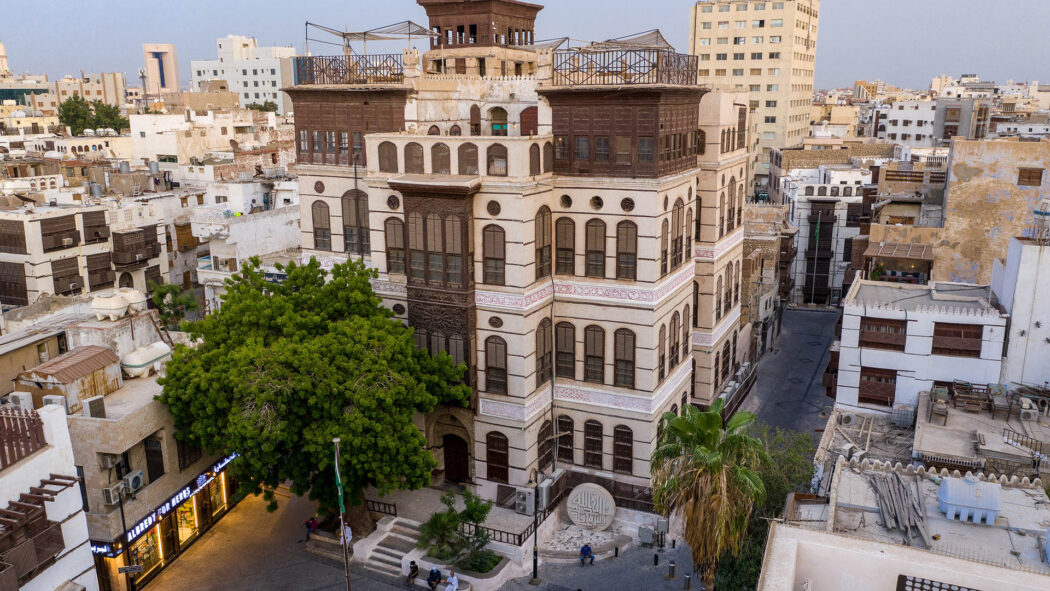
Almost every Saudi city has a historic quarter called Al Balad, filled with the aroma of exotic spices and the sound of the call to prayer. A series of narrow alleyways connect ancient coral-stone merchants’ houses, home to oud sellers, traditional bakeries, and the huge, glowing Souq Al Alawi in Jeddah, Saudi Arabia’s cosmopolitan port city. A number of the area’s vast, crumbling mansions, including Nasseef House, which hosts art and photography exhibitions as well as lectures by academics, have been sensitively restored since it was listed as a UNESCO World Heritage site in 2014. A district built in the seventh century is being revitalized by galleries, mangour woodcraft workshops, and cool cafés.
The Edge of the World
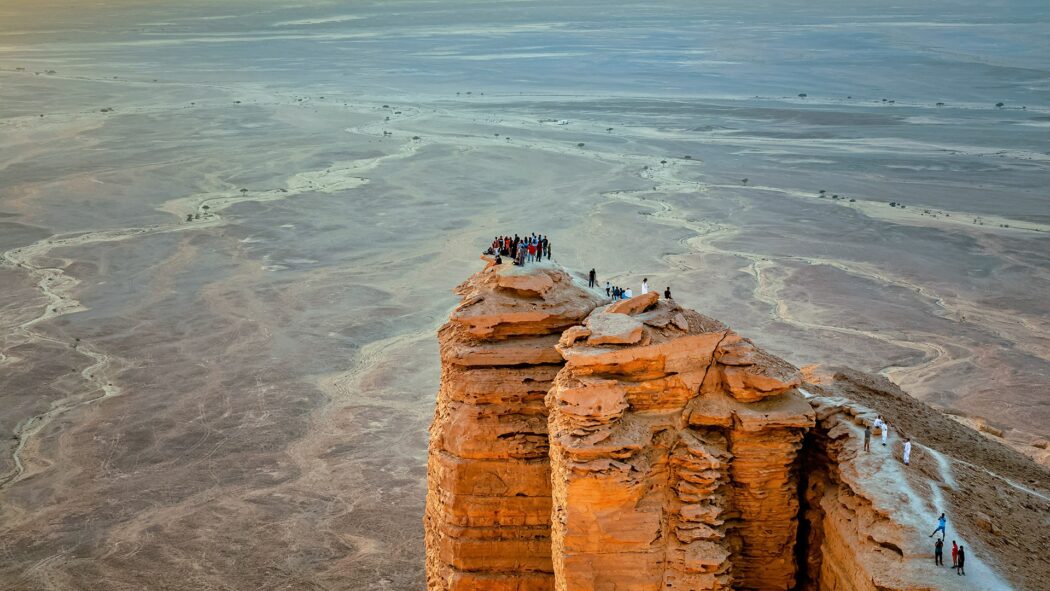
Another aptly named geological wonder is the Edge of the World (Jebel Fihrayn), a great towering wall of striated sandstone rising from an ancient ocean floor west of Riyadh. You can still see wild camels rambling across ancient caravan routes from the top, which can only be reached by four-wheel drive.
Diriyah
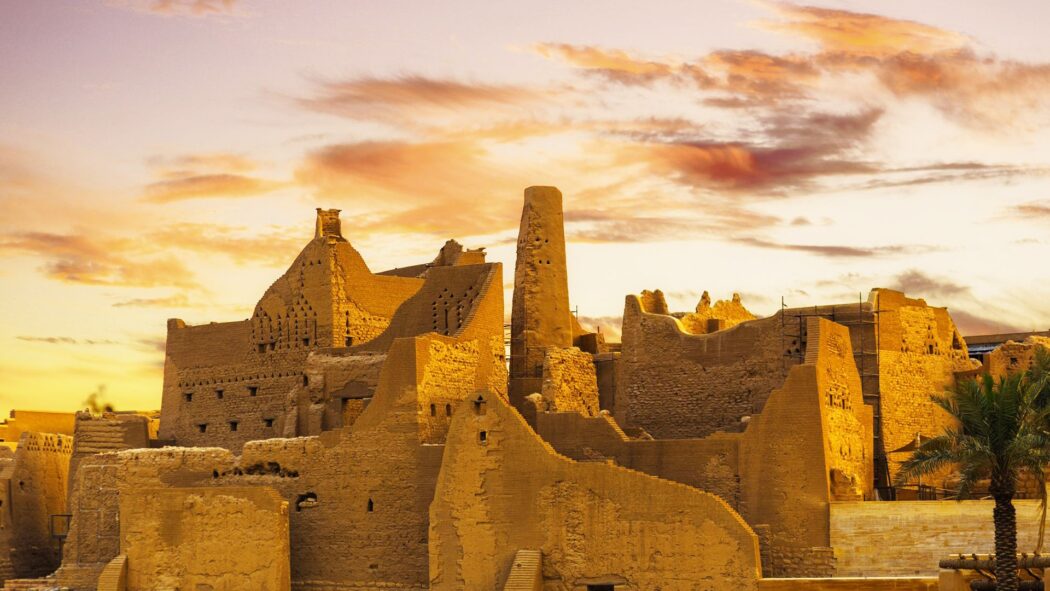
In Wadi Hanifa, just outside Riyadh, lies the ancient desert city of Diriyah, surrounded by lush greenery. Through the centuries, it served as a crossroad for pilgrims and traders, and it was the ancestral seat of the royal dynasty. Diriyah’s museums, like the magnificent Salwa Palace, tell the story of the citadel’s storied past. Restaurants and coffee shops line the palm-fringed avenues and offer Najdi plates such as gereesh bil laban, a cracked wheat dish with yogurt sauce.
Al Qarah mountain, Al Ahsa
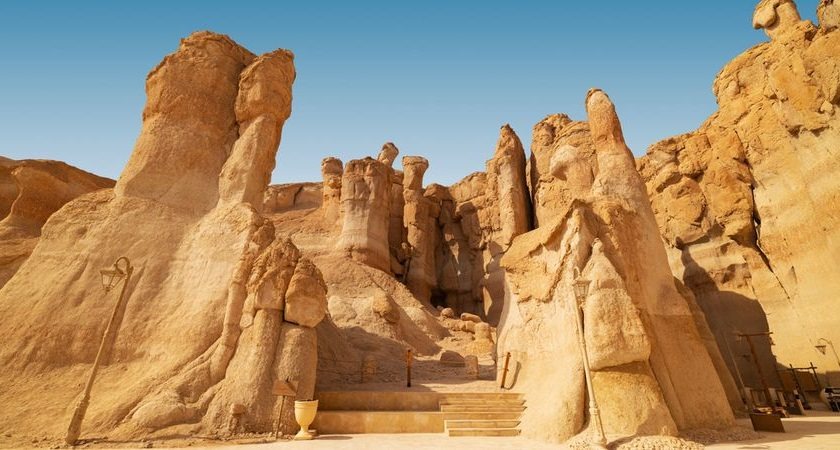
While it is one of the most beautiful regions of the kingdom, Al Qarah lies on the eastern edge of the Shadqam plateau. From the summit of Al Qarah mountain, which rises 670 feet above sea level, you can view a majestic stretch of sand-blasted caves and canyons. During your climb, you’ll find a warren of honeycomb caves punctuated with nooks and passageways to explore along the way, all of which provide rewarding panoramic views. As rigorously as its landscapes, place names reveal a deep reverence for nature and its elements. The main city of Hofuf is called Al Ahsa, which means ‘murmuring streams’. The mountains are surrounded by palm-tree farms and picturesque villages with artisanal shops and restaurants offering a shady respite.
Rijal Almaa
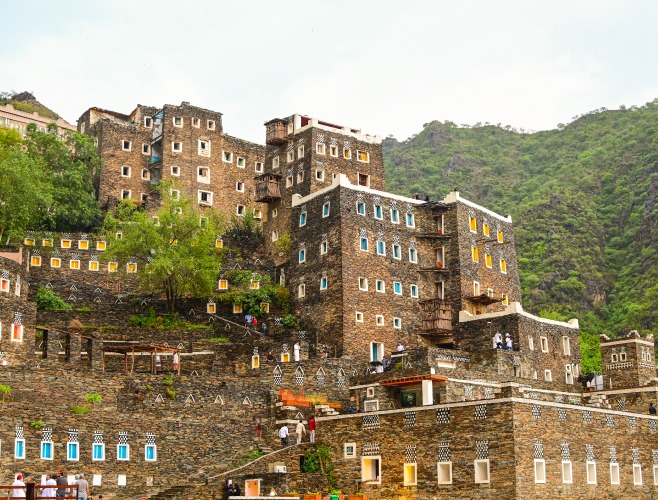
With its blocky stone buildings with bright shutters, Rijal Almaa is referred to as the Gingerbread Village and has long drawn tourists seeking rich culture and history. More than just a beauty spot, Qahtan tribe residents wear bright outfits and floral crowns every August to celebrate the Flowerman Festival, which is celebrated as much for its cultural heritage as for its beauty.


